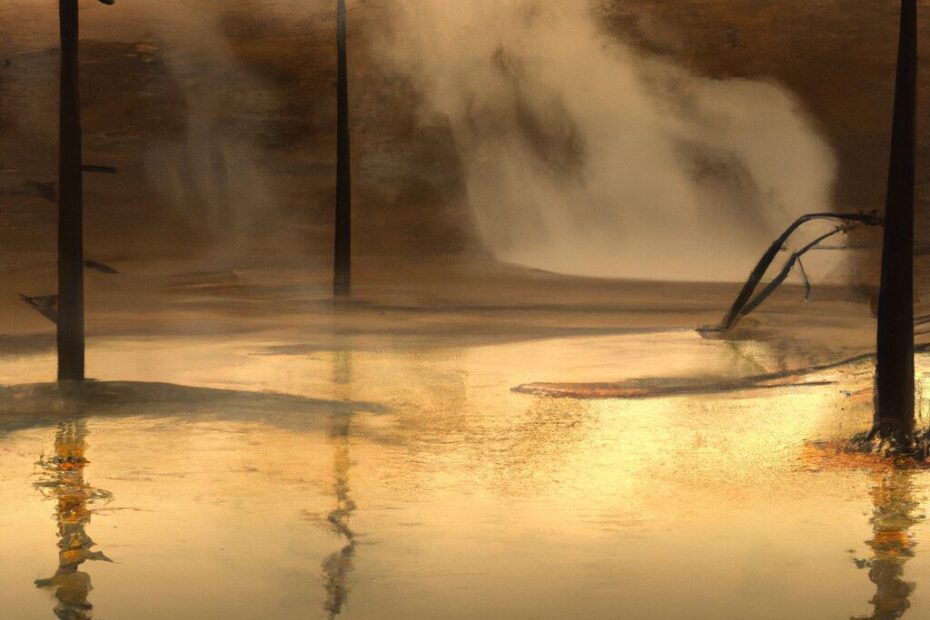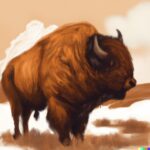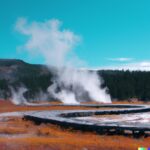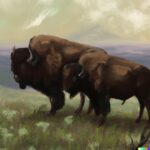Are you a photography enthusiast looking for the perfect location to capture stunning natural landscapes and wildlife? Look no further than Yellowstone National Park! This article delves into why Yellowstone is a photographer’s paradise, the best times for photography, must-see photography spots, and essential photography guidelines to follow while visiting.
Whether you’re a beginner or a seasoned pro, Yellowstone offers endless opportunities to capture breathtaking images and create lasting memories. So grab your camera and get ready to explore this iconic national park through the lens!
Why Photography in Yellowstone National Park?
Yellowstone National Park offers a captivating canvas for photography enthusiasts to capture the raw beauty of nature and the pristine environment.
With its impressive diversity of wildlife, from majestic bison and grizzly bears to elusive wolves and vibrant bird species, Yellowstone provides endless opportunities for photographers to document the wonders of the natural world.
The park’s stunning landscapes, including iconic geysers like Old Faithful and picturesque valleys like Lamar Valley, offer a range of compositions for photographers to explore.
Yellowstone’s ongoing conservation efforts, such as habitat restoration programs and wildlife protection initiatives, make it a prime destination for those passionate about capturing both the beauty of nature and the importance of environmental preservation through photography.
What Makes Yellowstone National Park a Photographer’s Paradise?
Yellowstone National Park’s status as a photographer’s paradise stems from its rich tapestry of diverse wildlife, breathtaking landscapes, and unwavering commitment to conservation.
Photographers are drawn to the park’s unique geological formations like the iconic Grand Prismatic Spring, Old Faithful geyser, and colorful canyons that provide a stunning backdrop for capturing nature’s beauty.
The park’s vast expanses offer endless opportunities for photographers to capture enchanting sunrises, dramatic sunsets, and the interplay of light and shadows amongst the lush forests and rolling meadows.
Yellowstone National Park’s proactive stance on environmental conservation ensures that future generations of photographers will continue to be inspired by its pristine landscapes and abundant wildlife.
When is the Best Time for Photography in Yellowstone National Park?
Choosing the best time for photography in Yellowstone National Park involves understanding the seasonal variations and optimal lighting conditions, especially during sunrise and sunset.
Each season in Yellowstone National Park offers a unique backdrop for photography. Spring brings blooming wildflowers and newborn wildlife, while summer showcases lush greenery and abundant wildlife activity. Fall transforms the park with stunning golden hues as the foliage changes color, and winter presents a magical scene with snow-covered landscapes and steaming geysers. Capturing the park’s beauty during these seasonal changes requires familiarity with sunrise and sunset times to make the most of the soft, golden light.
Photographers should be aware of any restrictions on drone use, off-trail hiking, or approaching wildlife for the safety of both the photographer and the park’s ecosystem.
What are the Different Seasons in Yellowstone National Park?
Yellowstone National Park experiences distinct seasons, each offering a diverse array of wildlife, changing environments, and photography opportunities throughout the year.
- During the spring months, Yellowstone’s landscape awakens from its winter slumber, with budding flora and newborn wildlife dotting the vast terrain. This season is perfect for capturing images of playful bear cubs, grazing elk, and gushing waterfalls framed by vibrant wildflowers.
- As summer arrives, the park becomes a bustling hub of activity, with animals like bison and wolves out and about, ready to be immortalized through your lens.
- Fall in Yellowstone paints the scenery in warm hues as the foliage transforms, providing the ideal backdrop for stunning nature photography.
- In winter, the park cloaks itself in a blanket of snow, offering a magical setting for capturing the serene beauty of the wilderness amidst the icy landscapes.
What are the Ideal Times of Day for Photography in Yellowstone National Park?
The ideal times for photography in Yellowstone National Park are often during the serene moments of sunrise and the magical glow of sunset, which offer enchanting lighting conditions for capturing memorable shots.
During sunrise, the soft golden light brings a warm ambiance to the landscapes, creating a dreamy atmosphere that enhances the natural beauty of the geysers, waterfalls, and wildlife.
As the sun sets, the vibrant hues of orange and pink paint the sky, casting a dramatic backdrop against the rugged terrain.
These changing light conditions provide photographers with a unique opportunity to capture the park’s diverse scenery in different moods and tones.
To make the most of these moments, photographers can utilize techniques such as silhouette shots, long exposure for smooth water effects, and bracketing to capture the dynamic range of light in the frame.
What are the Must-See Photography Spots in Yellowstone National Park?
Yellowstone National Park boasts a lineup of must-see photography spots that include iconic locations such as the Old Faithful Geyser, the Grand Prismatic Spring, the Grand Canyon of the Yellowstone, Lamar Valley, and Mammoth Hot Springs.
Each of these locations offers unique photographic opportunities that capture the essence and natural beauty of Yellowstone.
The Old Faithful Geyser, famous for its regular eruptions, provides a chance to capture the power and grandeur of nature in action.
Grand Prismatic Spring showcases vibrant colors that are a paradise for landscape photographers seeking stunning visuals.
The Grand Canyon of the Yellowstone with its awe-inspiring waterfalls and rugged cliffs presents a dramatic setting for capturing breathtaking scenery.
Lamar Valley is a haven for wildlife photography, especially for capturing iconic species like bison and wolves in their natural habitat.
Mammoth Hot Springs, with its terraces of travertine formations, offers a one-of-a-kind backdrop for creating artistic and abstract images.
To make the most of these photo opportunities, consider visiting during the golden hours of sunrise and sunset for optimal lighting conditions and experiment with different angles and compositions to create captivating and memorable images.
Old Faithful Geyser
Old Faithful Geyser stands as a timeless icon in Yellowstone National Park, offering photographers a captivating subject against the backdrop of majestic landscapes, especially during the enchanting hues of sunset.
As the sun dips low on the horizon, casting a warm glow over the geothermal wonder, the interplay of light and shadows creates a mesmerizing spectacle for photographers. Capturing the geyser’s eruptions during this golden hour can result in stunning images that highlight the power and beauty of nature.
Landscape photographers can experiment with different angles and compositions to frame the geyser within the natural beauty of Yellowstone’s diverse terrain, enhancing the visual appeal of their sunset shots. Employing long exposure techniques can convey the dynamic movement of the erupting geyser while capturing the ethereal essence of the moment.
Grand Prismatic Spring
The Grand Prismatic Spring in Yellowstone National Park offers photographers a kaleidoscope of colors and textures, harmonizing wildlife elements with stunning compositions that create visually compelling images.
As you wander around the boardwalks and observation points near the Grand Prismatic Spring, you will encounter a variety of wildlife interactions that enhance the photographic experience. From birds swooping in for a drink to bison grazing in the surrounding fields, potential subjects can be found at every turn.
To capture these moments effectively, consider using leading lines such as the boardwalk itself to guide the viewer’s eye towards the vibrant colors of the spring. Experimenting with different angles and perspectives can also offer unique compositions that showcase the natural beauty of this iconic location.
Grand Canyon of the Yellowstone
The Grand Canyon of the Yellowstone presents photographers with a dramatic canvas of sculpted cliffs, cascading waterfalls, and dynamic lighting that transforms the landscape into an artistic masterpiece.
The geological features of the canyon, with its vibrant hues of yellow, red, and orange rock layers, create a stunning backdrop for photography enthusiasts seeking to capture the raw beauty of nature.
As the sun moves across the sky, the play of light and shadow on the canyon walls highlights its textured surfaces and adds depth to each frame.
To enhance your shots at this iconic location, consider experimenting with different angles, utilizing long exposure techniques to capture the flow of waterfalls, and being mindful of the changing light conditions throughout the day for optimal results.
Lamar Valley
Lamar Valley in Yellowstone National Park is a wildlife photographer’s dream, offering unparalleled opportunities to capture the park’s diverse fauna in their natural habitats, requiring permits for certain activities.
Exploring Lamar Valley provides a chance to witness iconic species like bison, elk, wolves, and grizzly bears, presenting unique challenges and rewards for photographers.
Obtaining permits for commercial photography or filming is necessary to ensure compliance with park regulations and protect the wildlife. Patience and stealth are key when photographing animals in the wild, respecting their space and behavior while using telephoto lenses to maintain a safe distance.
By immersing oneself in the natural rhythms of Lamar Valley, photographers can create stunning images that convey the raw beauty and untamed spirit of the wildlife.”
Mammoth Hot Springs
Mammoth Hot Springs offers photographers a unique blend of geothermal features and ecological diversity, highlighting the delicate balance between the park’s environment and the imperative of conservation.
The terraces of Mammoth Hot Springs, formed by the flowing mineral-rich waters, present a stunning palette of colors and textures for photographers to capture. The stark contrast between the vibrant microbial life and the rugged, untamed landscape adds depth to every shot, showcasing nature’s resilience.
By exploring the intricate patterns and shapes created by the geothermal activity, photographers can truly appreciate the raw power of Earth’s natural forces. This location serves as a living testament to the importance of environmental conservation efforts in safeguarding such unique landmarks for future generations to enjoy.
Photography Guidelines in Yellowstone National Park
Ensuring responsible photography practices in Yellowstone National Park involves adhering to essential guidelines, following park rules and regulations, respecting wildlife, obtaining necessary permits, and contributing to the park’s conservation efforts.
When photographing wildlife in the park, it’s crucial to maintain a safe distance to avoid disturbing their natural behavior and potentially putting yourself at risk.
Always remember that the welfare of the animals comes first, and capturing the perfect shot should never compromise their well-being.
Be mindful of your impact on the park’s delicate ecosystem and be sure to pack out all your waste, leaving no trace behind.
By prioritizing ethical photography practices and conservation principles, visitors play a vital role in preserving Yellowstone’s biodiversity for generations to come.
Respect the Wildlife and Their Habitat
Respecting the wildlife and their natural habitat is paramount when engaging in photography in Yellowstone National Park, as it ensures the protection and well-being of the park’s diverse fauna.
Photographers must adhere to ethical considerations and follow safety protocols to minimize their impact on the animals and environment. Approaching wildlife quietly and at a safe distance not only prioritizes their comfort but also fosters genuine, unaltered moments for stunning photographs.
Taking the time to learn about the behaviors and habitats of the creatures you wish to photograph can lead to more rewarding encounters while minimizing disruptions. Remember, our goal should be to capture the beauty of nature without causing harm or distress to the very subjects we aim to celebrate through our lens.
Follow Park Rules and Regulations
Adhering to the park’s rules and regulations is essential for ensuring visitor safety, preserving the park’s natural resources, and maintaining a harmonious photography experience in Yellowstone National Park.
Photography enthusiasts must be aware that drones are strictly forbidden within Yellowstone National Park boundaries as they can disrupt wildlife and disturb other visitors. It is important to respect the designated areas for photography to prevent damage to fragile ecosystems and wildlife habitats.
Certain areas may have limited access or require a permit for commercial photography projects to safeguard the park’s conservation efforts and minimize human impact on the environment.
Be Mindful of Your Impact on the Environment
Maintaining environmental mindfulness while photographing in Yellowstone National Park is crucial for safeguarding the park’s delicate ecosystems, contributing to conservation efforts, and preserving the natural beauty for future generations.
Photographers play a pivotal role in capturing the enchanting landscapes and diverse wildlife of the park, serving as visual storytellers who can inspire others to appreciate and protect these natural wonders.
By adopting sustainable photography practices, such as minimizing waste, respecting wildlife boundaries, and promoting eco-friendly equipment, photographers can reduce their ecological footprint and promote a culture of environmental responsibility within the photography community.
Through their art, photographers can raise awareness about the importance of preserving these pristine habitats and fostering a deeper connection between viewers and nature.
Be Prepared for Changing Weather Conditions
Anticipating and preparing for fluctuating weather conditions is essential for photographers exploring Yellowstone National Park, as it ensures the safety of equipment, the quality of lighting, and the success of photographic endeavors.
Having the right gear is crucial in weather-ready photography trips to Yellowstone. Waterproof camera bags, lens hoods, and lens cloths are must-haves to protect your equipment from rain or snow. Investing in a sturdy tripod that can withstand windy conditions will help you capture sharp images. When setting up your lighting, be prepared to adjust exposure settings to compensate for overcast skies or harsh sunlight, ensuring proper exposure and color balance in your photos.
Be Respectful of Other Visitors
Demonstrating respect for fellow visitors in Yellowstone National Park fosters a positive photography experience, upholds visitor safety standards, and cultivates a welcoming environment for all individuals enjoying the park’s natural wonders.
Being courteous towards others during photography excursions not only ensures that everyone gets a chance to capture the beauty of the park without disruptions but also plays a crucial role in maintaining safety protocols.
By following communal etiquette, such as refraining from blocking pathways or being overly intrusive, visitors contribute to a harmonious atmosphere where everyone can peacefully coexist.
This kind of behavior reflects a commitment to ethical photography practices, respecting both the surroundings and the people sharing the space.
Last Updated on February 11, 2024 by Jon Waraas – Originally Posted: February 11, 2024

I’m Jon Waraas, and I’ve been navigating the online world since 2006. By day, I’m the proud owner of some eCommerce gems, and by night, I’m the voice behind the adventures on Waraas.Com.
My heart, however, belongs to the wild beauty of Yellowstone National Park. I’ve got a collection of websites dedicated to sharing the wonders of this natural masterpiece. Oh, and did I mention? I’m currently building my own cabin inside the ghost town of Gilmore, Idaho – a cabin with tales to tell!
When I’m not immersed in the digital realm, you’ll find me lacing up my boots for a good hike or setting up camp under the star-studded sky.




